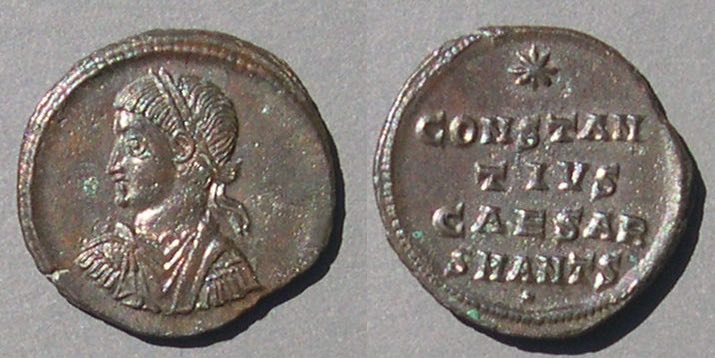
Coin Types of the Roman emperor Constantius II, 324-361 (in bronze).
The type set for Constantius II with one image of each.
This is page 2. Page 1 is the list of types with one photo of each. Pages 3-5 have additional images and links.
Five categories of official types, linked to images below on this page:
1) as Caesar (this page, below) and (a page with additional examples)
2) as Augustus, pre-reform (this page, below) and (a page with additional examples)
3) FEL TEMP REPARATIO reform coins (this page, below) and (a page with additional examples)
4) issued by Vetranio (this page, below) and (a page with additional examples)
5) other post-reform types (This page, below)
Constantius II, as Caesar, 324-337. From Table 1.
F338: CONSTAN/TIVS/CAESAR, Anepigraphic obverse.

Anepigraphic.
CONSTAN/TIVS/CAESAR/
SMANTS
This example: 18 mm. RIC VII Antioch 60.
Note for collectors: Anepigrapic coins like this were issued for Constantine, Crispus, Constantine II, Constantius II, Helena, and Fausta. For Constantius II they are common from Antioch and rare from the other mints.

 GLORIA EXERCITVS
GLORIA EXERCITVS 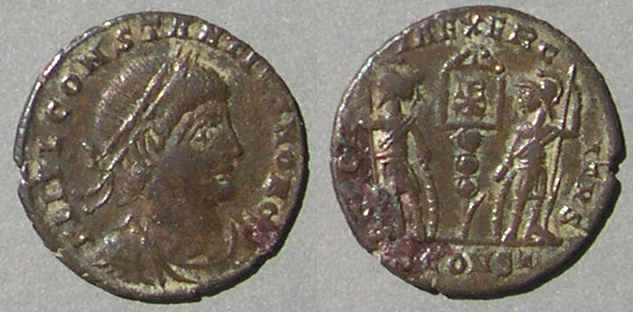 Constantius II, as Caesar
Constantius II, as CaesarNote for collectors: This is a very common type from many mints. It was also commonly imitated in ancient times, especially in Britain. This type has an important variety with a chi-rho on the standard (this coin) which is issued during Constantine's lifetime. We know because Constantius II is Caesar and not yet Augustus. Only from Arles = Constantina. There are similar coins with a chi-rho on the standard from Sisica (F381), but they are with Constantius II as Augustus and therefore not during the lifetime of Constantine.
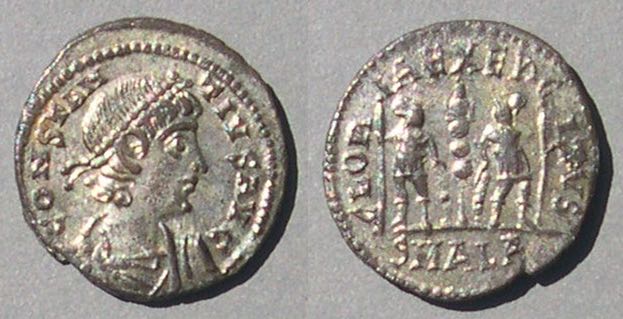


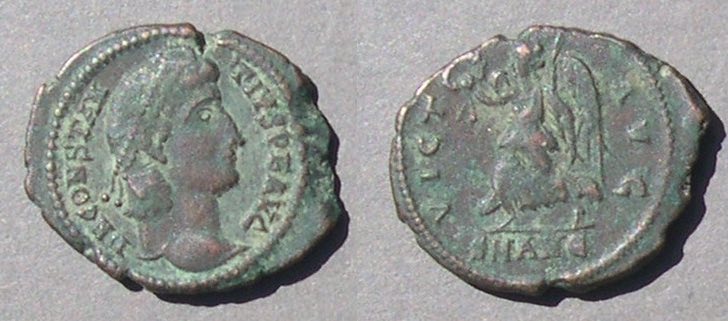

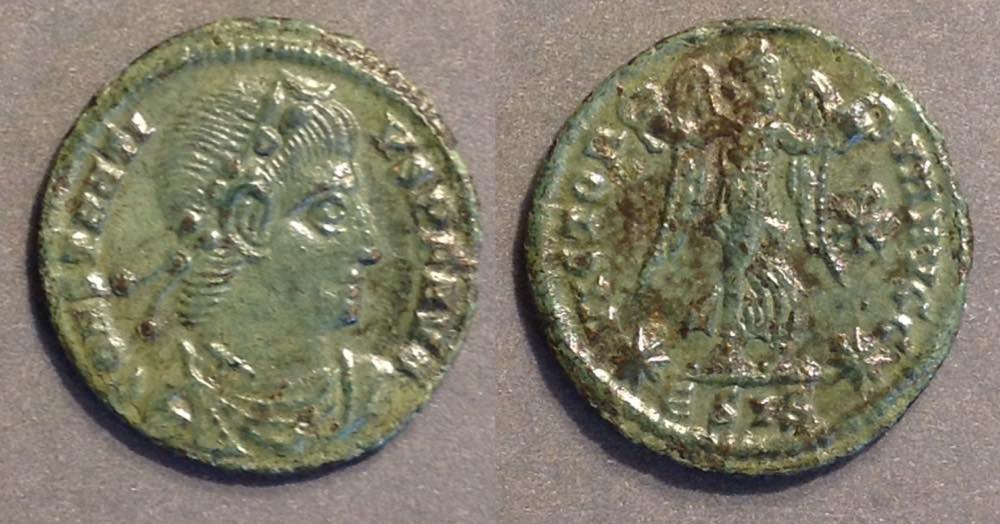
 VICTORIA AVGVSTORV
VICTORIA AVGVSTORV
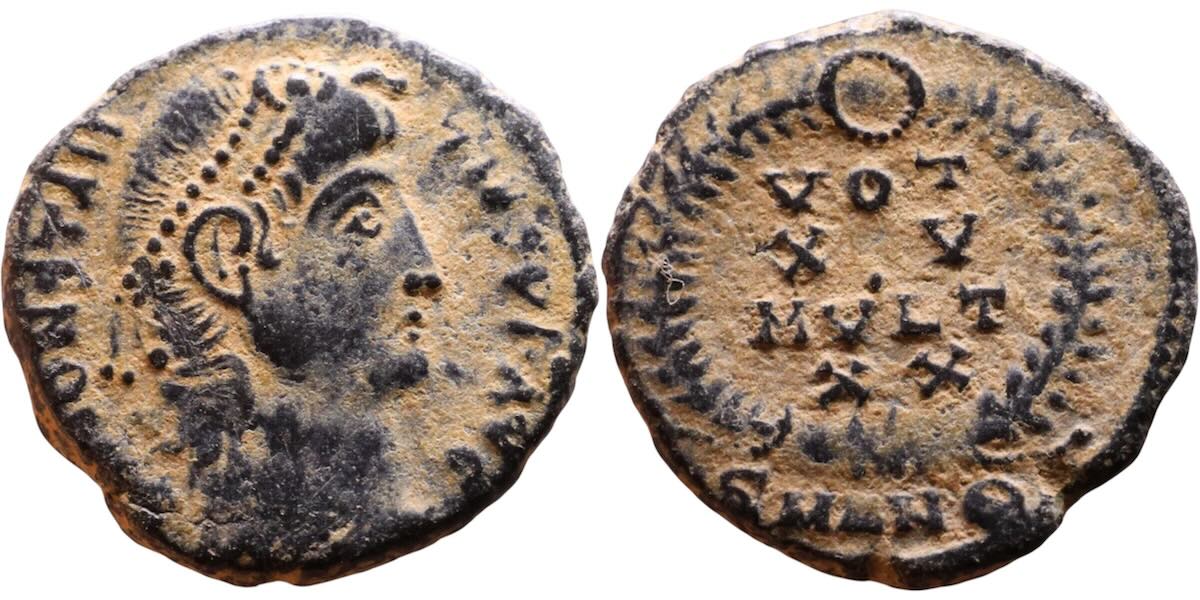 This example: 14 mm. 1.63 grams.
This example: 14 mm. 1.63 grams.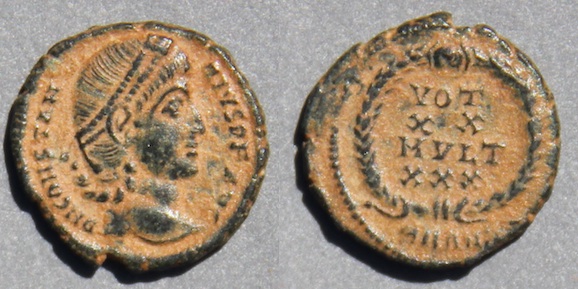
F409: FEL TEMP REPARATIO, soldier spearing fallen horseman

FEL TEMP REPARATIO
soldier spearing fallen horseman
This type comes in various sizes 24-17 mm.
(See the next photo for relative sizes)
This example: 25-23 mm. RIC VIII Antioch 132.
Note for collectors: This type is very common. It is widely collected by mint and by position of the "fallen horseman" (which can be "reaches back," like this example, or "kneels" or "sits [next to the horse] " or "clutches [the horse]"
Its size declined rapidly over time (see the next image).
Some varieties have special interest, such as those with LXXII in the field (coin), for "72" coins to the pound.
Because they are common and inexpensive in nice shape from many mints in many varieties, they make an interesting series to collect.
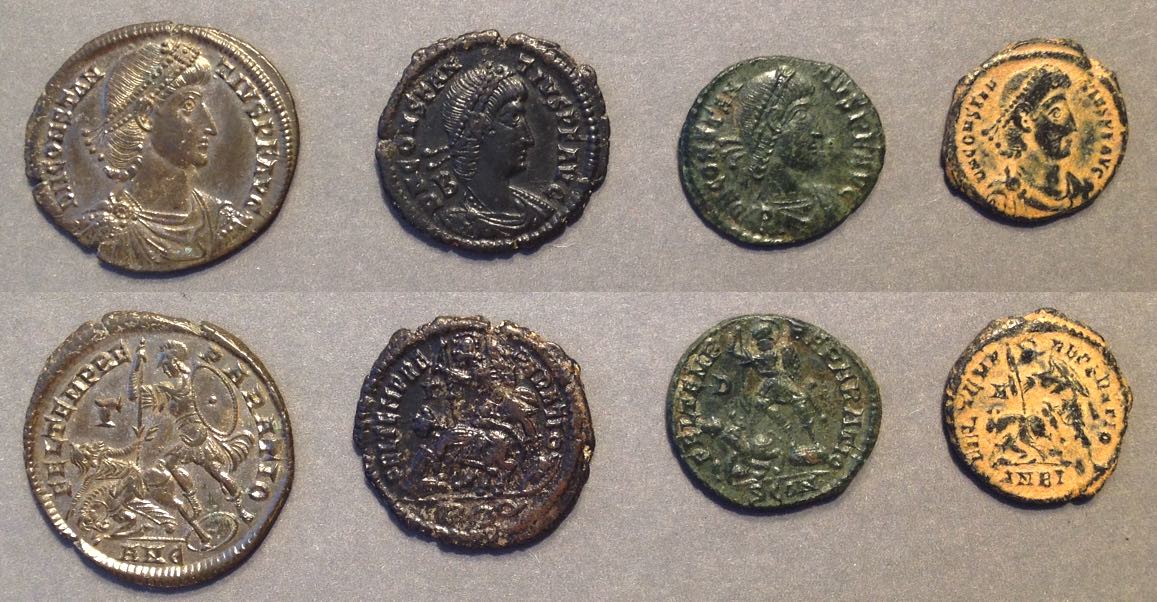
(Other examples)
F408: FEL TEMP REPARATIO, emperor on galley, AE2
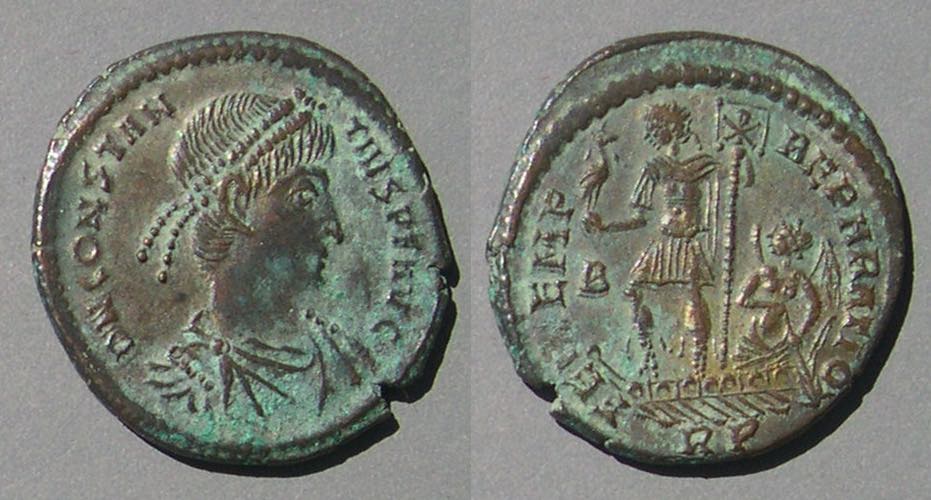
FEL TEMP REPARATIO,
emperor on galley, holds phoenix or Victory
(The design also comes as an AE3, next)
This example: 25 mm. RIC VIII Rome 115.
Note for collectors: This type is common. This example has the emperor holding a phoenix, while some have the emperor holding Victory crowning him.
(Other examples)
F414: FEL TEMP REPARATIO, emperor on galley, AE3

FEL TEMP REPARATIO,
emperor on galley, holds phoenix or Victory
This example: 18 mm. RIC VIII Thessalonica 119.
Possibly a half-denomination.
This is the smaller size of the "galley" type.
Note for collectors: This example may actually be a different denomination, 1/2 the other. On the other hand, it might just be a later, smaller, version. An image above shows that the soldier-spearing-fallen-horseman type declined in size over time, with no obvious line of distinction that suggests the smaller ones are a half denomination. However, these galley types come in two distinct sizes, without the intermediate sizes found for the soldier-spearing-fallen-horseman type.
 FEL TEMP REPARATIO,
FEL TEMP REPARATIO,F411: FEL TEMP REPARATIO, emperor with two captives
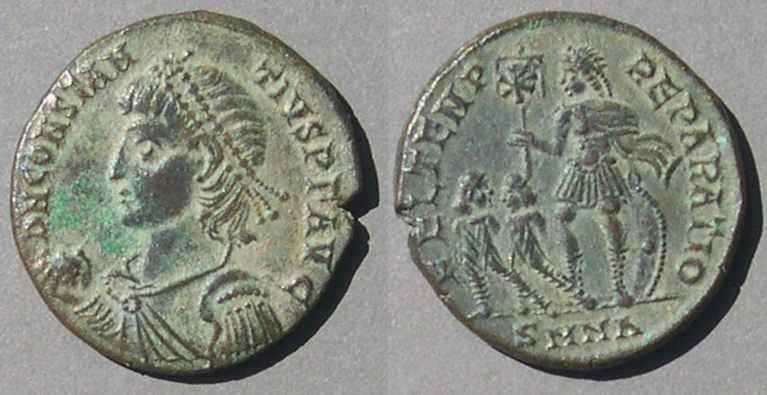 FEL TEMP REPARATIO
FEL TEMP REPARATIO
emperor with two captives to left
This example: 20 mm. RIC VIII Nicomedia 67
Note for collectors: This type is very common. The two captives can be almost standing, as here, or kneeling. This example has a standard with a chi-rho. Others have a cross or a cross-rho. On some it just looks like an X.
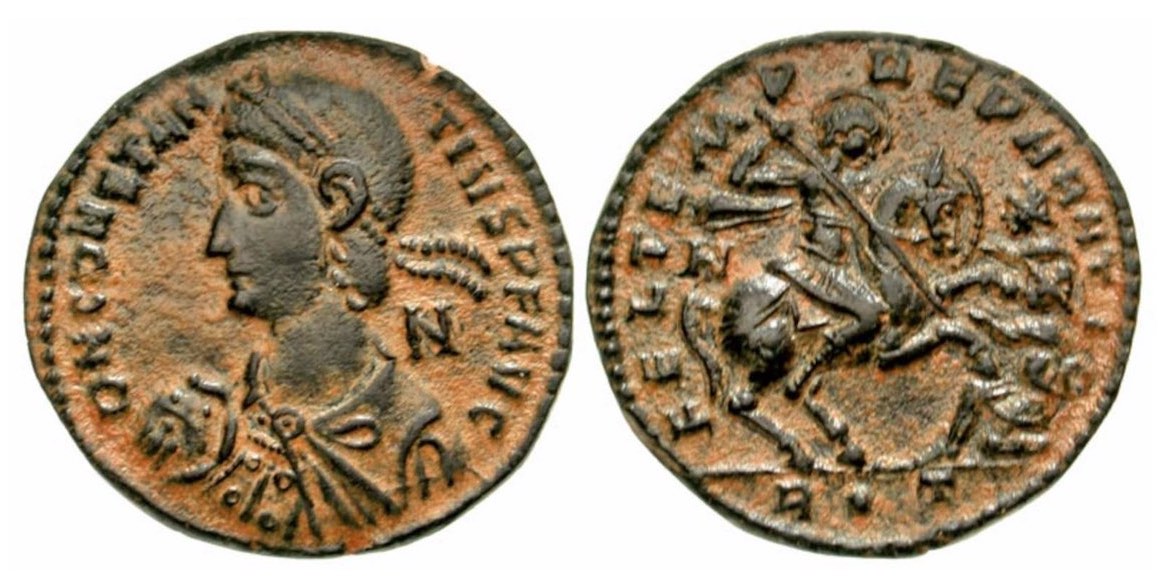
F425: FEL TEMP REPARATIO, emperor and one captive
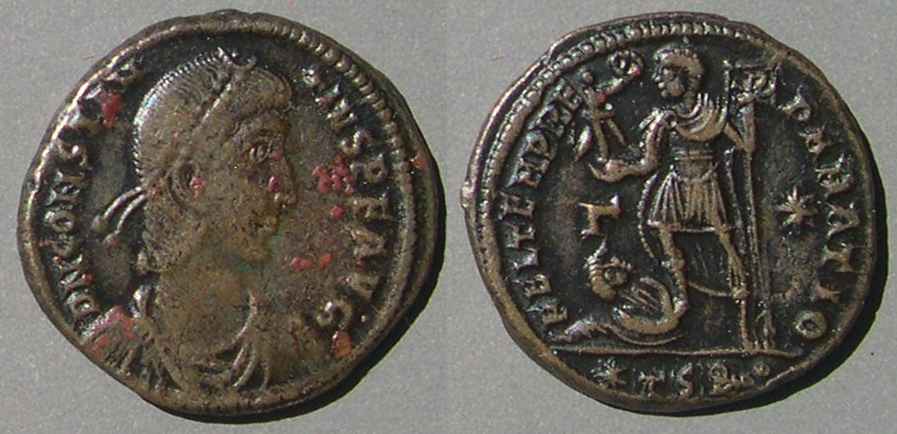
FEL TEMP REPARATIO
emperor and one captive to left.
Only at Thessalonica.
This Example: 24 mm. RIC VIII Thessalonica 178.
Note for collectors: This type is the second-rarest FTR type available. It is rarely in the sort of top condition in which other FEL TEMP REPARATIO types are often found.
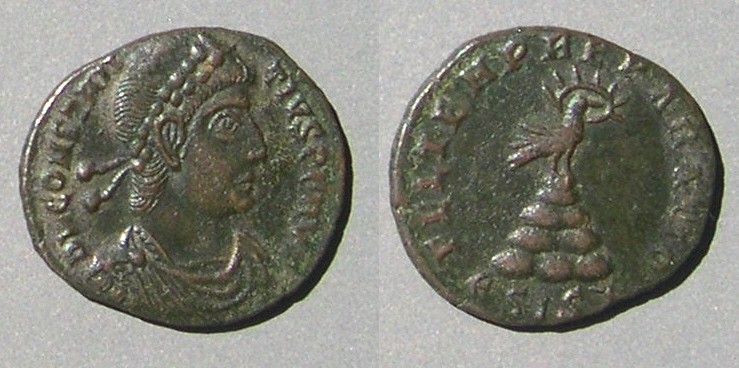
F413, FEL TEMP REPARATIO, phoenix on globe. Note for collectors: This type is common and sometimes considered to be merely a variety of the previous type.

FEL TEMP REPARATIO
Phoenix on globe.
This example. 17 mm. RIC VIII Antioch 130.
 Issued by Vetranio, 350
Issued by Vetranio, 350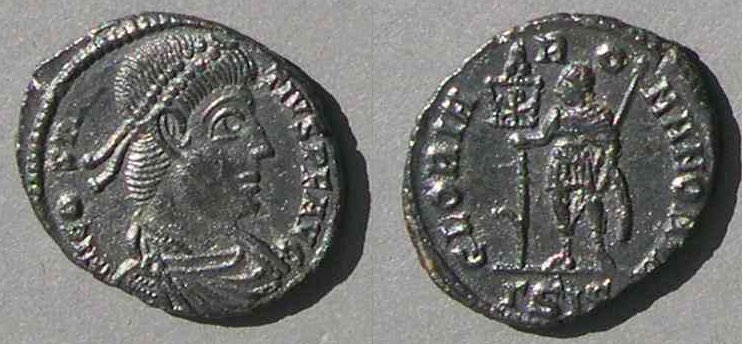 Issued by Vetranio, 350
Issued by Vetranio, 350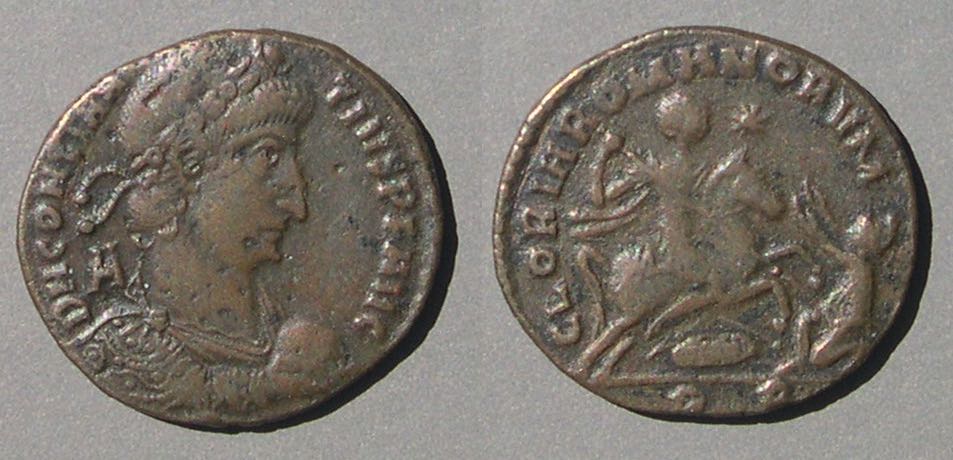

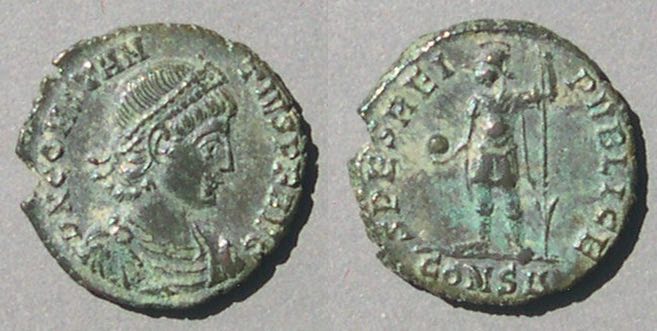
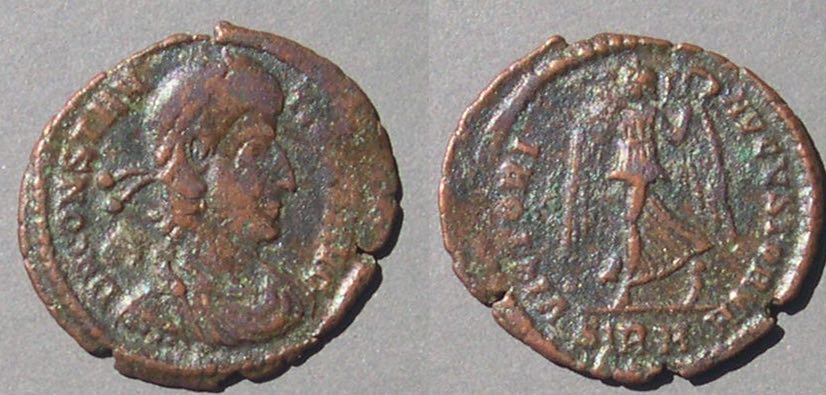
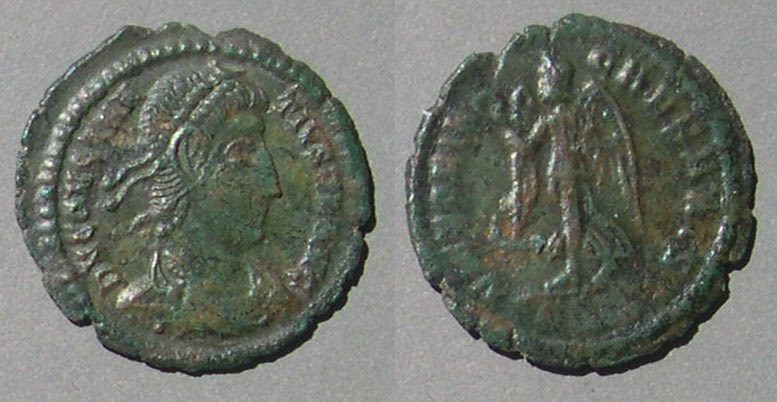
1) Return to page 1, the page of tables of types of Constantius II.
2) This page was page 2. Return to the top of this page.
3) Go to page 3 with additional images of FEL TEMP REPARATIO types.
4) Go to page 4 with additional images of types of Vetranio
5) Go to page 5 with additional images of other types.
Go to the Table of Contents for this entire educational web site.